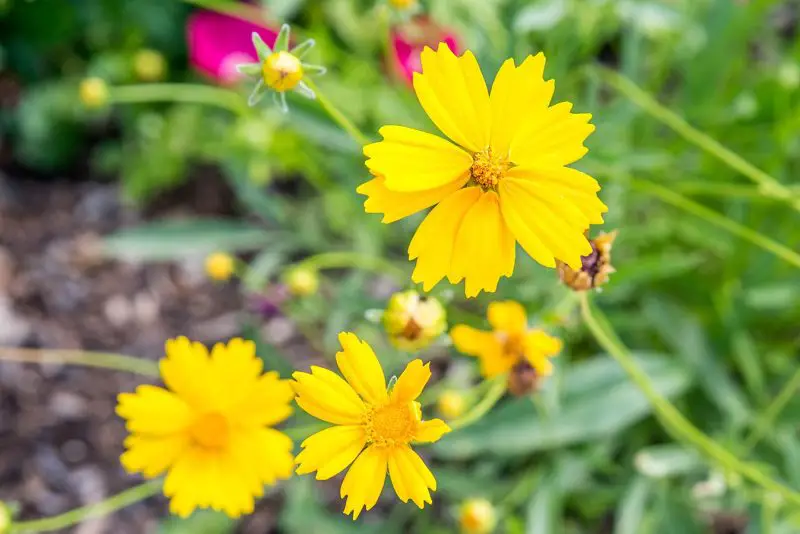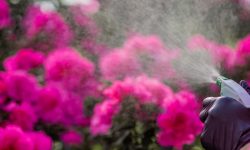Coreopsis, also known as tickseed, is a favorite perennial in many gardens due to its bright, cheerful flowers and long blooming season. These hardy plants produce masses of vibrant yellow, orange, or red blooms that bring lively color to any garden bed or border. To enjoy continuous flowering throughout the summer months, proper deadheading is essential. Deadheading, the practice of removing spent flowers, helps the plant conserve energy and focus on producing new blooms.
This comprehensive guide explores how to deadhead coreopsis effectively to encourage endless blooms all summer long. From understanding the importance of deadheading to the techniques and timing, this article will provide everything you need to keep your coreopsis plants vibrant and flowering continuously.
Understanding the Importance of Deadheading Coreopsis

Deadheading coreopsis is more than just a cosmetic task. While faded flowers can look unattractive, the real reason gardeners deadhead is to redirect the plant’s energy away from seed production and towards new flower growth. When flowers fade and are not removed, the plant invests resources into developing seeds, which naturally slows down the formation of fresh blooms.
Removing spent flowers stimulates the plant to produce more flowering shoots, prolonging the blooming period. Without regular deadheading, coreopsis may experience a shorter flowering window, reducing the visual impact in your garden. Furthermore, deadheading helps keep the plant tidy by preventing old flowers from shriveling and creating a messy appearance.
In addition to boosting bloom production and improving aesthetics, deadheading can also contribute to the overall health of your coreopsis. Decaying flowers left on the plant can attract pests or develop fungal infections in humid conditions. By removing these flowers promptly, you reduce the risk of disease and encourage better air circulation around the plant.
Knowing When to Deadhead Coreopsis
Timing is a critical factor in deadheading coreopsis for maximum flower production. The best time to begin is as soon as you notice the first flowers start to fade. Coreopsis blooms tend to last several days before petals begin to wilt and lose their vibrancy.
Gardeners should regularly inspect their plants, especially during the peak flowering months of late spring through summer. Checking every few days allows for timely removal of spent blooms, which supports continuous flowering. Waiting too long can result in seed development and a slowdown in new flower formation.
Deadheading is best done during dry weather and cooler parts of the day, such as early morning or late afternoon. This reduces stress on the plant and minimizes the chance of spreading diseases through wet cuts or handling.
How to Identify Spent Flowers on Coreopsis
Recognizing which flowers to remove is crucial for effective deadheading. A spent coreopsis bloom will display faded petals that are dull, shriveled, or beginning to drop. The center of the flower head may develop seed pods as the plant shifts focus from blooming to seed production.
Careful observation will help distinguish between spent blooms and healthy buds that have yet to open. Buds are typically firm, tight, and vibrant in color, while spent flowers appear limp and discolored. Avoid removing buds by mistake, as this will reduce the number of flowers the plant produces.
Learning to identify spent flowers becomes easier with experience. Regularly examining your coreopsis plants and practicing selective deadheading will improve your skill and ensure you remove only the appropriate blooms.
Tools and Preparation for Deadheading Coreopsis
Deadheading coreopsis can be done using simple gardening tools or by hand, depending on the plant size and flower type. For plants with long, sturdy stems, sharp garden scissors or pruning shears provide clean cuts that help the plant heal quickly.
For smaller coreopsis varieties with delicate stems, pinching off spent blooms with your fingers can be effective. Whichever method you choose, it is essential to use clean tools or wash your hands thoroughly to prevent the spread of diseases.
Disinfecting pruning tools with rubbing alcohol or a mild bleach solution before and after use helps maintain plant health. Wearing gloves during deadheading can protect your hands from any irritants or rough plant surfaces.
Step-by-Step Guide: How to Deadhead Coreopsis
Locate the Spent Flowers
Begin by scanning your coreopsis plants for flowers that are past their prime. Focus on blooms that have wilted petals or show signs of seed formation in the center. Use gentle hands or tools to avoid damaging nearby healthy foliage or buds.
Cut or Pinch the Flower Stem
For larger coreopsis, use sharp scissors or pruning shears to cut the stem back to just above the first set of healthy leaves or a lateral bud. This encourages the plant to produce new shoots from the node, promoting further blooming.
For smaller plants or those with delicate stems, carefully pinch off the spent flower with your thumb and forefinger, pulling gently to avoid harming the stem.
Dispose of Removed Flowers
Collect all removed flowers and dispose of them away from your garden. This helps prevent the spread of pests or diseases that may be hiding in the decaying blooms.
Monitor and Repeat
Deadheading is an ongoing process. Regularly check your coreopsis plants every few days throughout the blooming season and repeat the steps as necessary. Consistency is key to maintaining an endless supply of colorful flowers.
Additional Tips for Maintaining Healthy, Blooming Coreopsis
Watering Practices
Coreopsis prefers well-drained soil and can tolerate dry conditions once established. However, during extended dry periods, occasional deep watering encourages robust growth and more flowers. Avoid overhead watering to reduce fungal risks.
Fertilizing Coreopsis
While coreopsis is generally low-maintenance, applying a balanced, slow-release fertilizer in early spring can support healthy foliage and abundant blooms. Avoid over-fertilizing with nitrogen, as this may encourage excessive leaf growth at the expense of flowers.
Controlling Weeds and Mulching
Keep the area around your coreopsis free from weeds, which compete for nutrients and water. Applying a layer of organic mulch helps retain moisture, suppress weeds, and moderate soil temperature, contributing to healthier plants.
Dividing and Transplanting
Every few years, coreopsis may become crowded and produce fewer blooms. Dividing the plant in early spring or fall revitalizes it, promoting vigorous flowering. When transplanting, ensure the new location has full sun and well-drained soil.
Common Mistakes to Avoid When Deadheading Coreopsis
Failing to deadhead regularly can cause a decrease in flower production and a less attractive plant appearance. Another common error is cutting too far down the stem, which can remove potential flowering buds or damage the plant’s structure.
Removing buds instead of spent flowers is also a mistake that can limit blooms. Always carefully inspect each flower head before cutting to ensure you preserve future flowers.
Lastly, using dull or dirty tools can harm your coreopsis plants by creating ragged cuts that invite disease. Maintain your gardening equipment for best results.
Extending Coreopsis Bloom Time Through Proper Care
Combined with regular deadheading, other cultural practices can maximize the blooming period of coreopsis. Selecting disease-resistant varieties, planting in suitable locations with full sun, and maintaining soil fertility all contribute to extended flowering.
Pruning back the plant by about one-third in mid-summer can also stimulate a late-season bloom. However, this should be done carefully to avoid removing too many flowering stems.
FAQs About Deadheading Coreopsis
How often should I deadhead coreopsis?
You should deadhead coreopsis every few days to once a week during the blooming season. Frequent removal of spent flowers encourages continuous blooms and keeps the plant looking neat.
Can I deadhead coreopsis by pinching with my fingers?
Yes, for smaller coreopsis varieties or delicate stems, pinching off spent blooms with your fingers works well. For larger stems, use clean, sharp pruning shears for a cleaner cut.
Will deadheading coreopsis make it bloom longer?
Absolutely. Deadheading redirects the plant’s energy from seed production to new flower growth, significantly extending the blooming period throughout the summer.
What happens if I don’t deadhead coreopsis?
If you skip deadheading, coreopsis will produce seeds, which slows down the formation of new flowers. The plant may also look untidy as old flowers shrivel and fade.
Is deadheading coreopsis necessary for all varieties?
Most coreopsis varieties benefit from deadheading to promote longer blooming. However, some self-cleaning types may require less frequent deadheading.
Conclusion
Deadheading coreopsis is a straightforward yet highly effective technique to enjoy endless blooms throughout the summer. By regularly removing spent flowers, you help the plant focus its energy on producing new, vibrant blooms while keeping the garden neat and disease-free.
With attention to timing, careful identification of spent flowers, and proper cutting techniques, your coreopsis will reward you with a dazzling display of color for months. Supporting your plants with appropriate watering, feeding, and maintenance ensures that your coreopsis remains healthy and floriferous season after season.
Implement these strategies to maximize the beauty and longevity of your coreopsis, turning your garden into a bright, cheerful haven from spring until fall.






